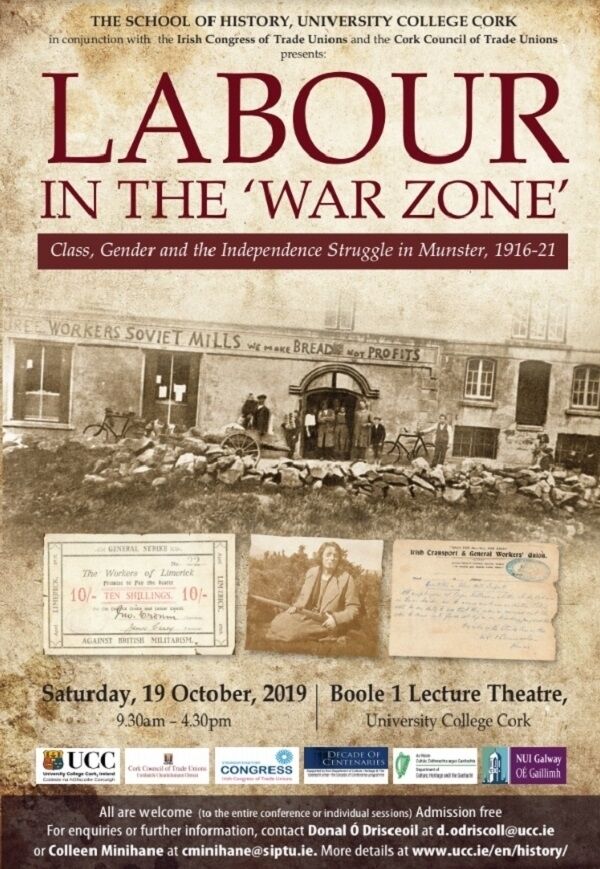Munster's labour movement and the independence struggle: A regional exception?
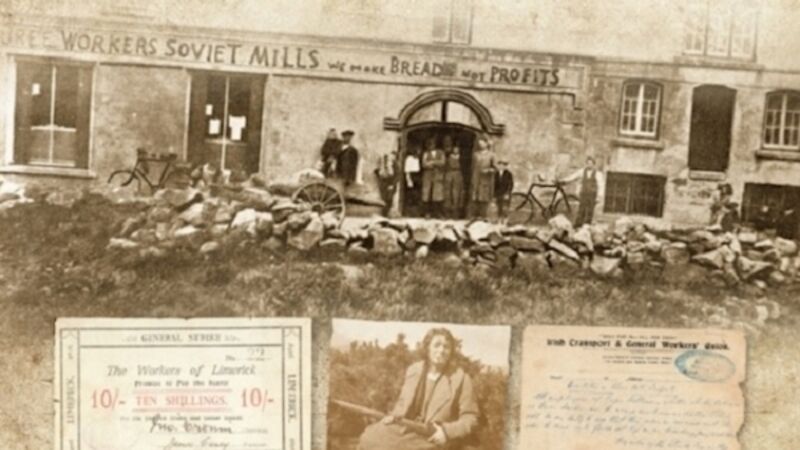
Leading Irish labour historian will deliver a keynote address on the labour movement in Munster during the war of independence at a major conference in UCC tomorrow. O’Connor asks why industrial unrest in Munster in this period was so militant, and how was it connected to the independence struggle.
ON 17 January 1890, bacon salters from Cork and Waterford assembled in the meeting rooms of the Limerick Porkbutchers’ Society to form the Amalgamated Society of Porkbutchers.
Until its collapse in 1897, the Amalgamated Society of Porkbutchers was one of the leading unions in Munster, bringing together the three great centres of the bacon curing trade. It was also one of Labour’s the very few attempts at regional co-ordination. One might even argue that the AS Porkbutchers marked the rise and fall of the Munster labour movement.
I think the concept of Munster sits more easily here in Cork. Off the sportsfield, it doesn’t have the same purchase elsewhere in the province. Waterford is in the south-east as much as it is in Munster. Clare is in the West of Ireland.
There was no Munster Labour movement. There was a labour movement in Munster, which saw itself as part of national organizations and had no regional consciousness. That sense of being national was reinforced by the novelty of it all. The post-1916 years were the first time that Labour became a nationwide force.
The special conference which the Irish TUC called in December 1916 to discuss the wartime food-supply crisis was the first time the ITUC had sought to speak for the working class as a whole rather than its affiliated unions. It’s also important to remember that these years need to be seen in a global context. Since the growth of seapower, of empire, and of contact with the Americas in the late 18th century, Ireland was one of the most globalized countries in the world.
Every major political movement in Ireland since the Volunteers of 1778 has been a consequence of international factors. This was particularly evident in 1917-21 when Europe was giddy with the idea of a bright new future. And this was to be a radical future. There was a widespread feeling that there could be no going back to governance by the pre-1914 elites who had blundered into a catastrophic war.
And there would have to be a pay-back for Labour for its support during the world war. In Russia, the Bolsheviks were in power. For many in Ireland, their policies of opposition to the world war and imperialism and support for national self-determination chimed with Sinn Féin. In America, President Wilson had announced his 14-point plan for peace and promised that peace would be based on democracy and self-determination. In many European countries, 1919-20 are known as ‘the two red years’.
In Ireland, farmers would remember them as ‘the red flag times’.
Nonetheless there were differences to the scene in Munster. In comparison with the other provinces Munster had a broader spread of urbanization, headed by the three county boroughs of Cork, Limerick, and Waterford; a relatively labour-intensive agricultural economy; a stronger tradition of labour organization in small towns and on the land; and it would be more intensively involved with the War of Independence. So what did these differences mean for Labour?
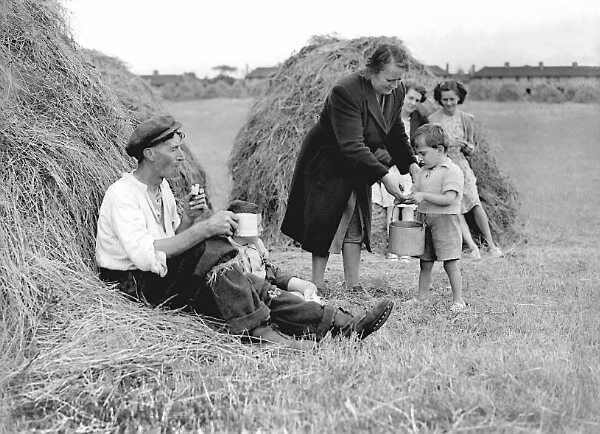
The emergence of labour unrest
The rise of the labour movement between 1917 and 1923 was due fundamentally to the world war. The first half of the war brought shortages and inflation, and generated class tensions against the farmers, shopkeepers, and employers who were believed to be profiteering. Until the later war years there was no system of rationing or price control and even then it was patently inadequate.
In Britain there were hunger marches in some cities. The threat of a strike by munitions workers in Britain in 1916 led the govt to keep the war effort going by liquidating national assets to release more money into the economy. From 1917, wages rose faster than prices. But the money was there only for those who could get it, and to get it, you needed to join a union. So the first half of the war stored up grievances, and the second half provided the means of redress.
Industrial conflict took on an exceptionally combative character, partly due to the militancy of the protagonists, the primitive state of conciliation and arbitration machinery (much less advanced in Ireland than in Britain), and the increasing paralysis of the police in the face of the IRA. Labour was certainly affected by the Europe-wide radicalism of these years, and for tactics its chose to revive pre-war Larkinism, which was the form of militancy with which it was most familiar.
So strike tactics involved an emphasis on the sympathetic and generalized action. Strategy aspired to achieving the OBU, the One Big Union, through which workers would eventually control the economy and society. Larkinism was an Irish version of syndicalism, the leading version of revolutionary socialism before the Bolsheviks came to power.
The secret of the success of syndicalism lay in the fact that it was not so much a theory as a toolbox, from which workers could pick and choose tactics of practical value. Syndicalists believed that strikes, sympathetic action, and the OBU fostered class consciousness and class struggle would eventually lead to an industrial commonwealth in which the means of production was controlled by the workers.
They also suspected political parties as stepladders for theorists and careerists, and for this reason the Irish Labour Party was one and the same as the Trade Union Congress, to keep it under workers’ control.
Munster was distinctive most obviously in its agricultural economy. There was an east-west gradient in agriculture, with the west given to sheep-farming and stockbreeding, and dairying and tillage being more common in the east. The most labour-intensive farming was found in the dairylands of central Munster and the twelve most south-easterly tillage counties.
The number of farm labourers was in steady decline, but they still made up almost 200,000 out of 900,000 waged workers in Ireland. Leinster and Munster had the highest ratio of labourers to farmers, at 1.9 and 1.3 but in Munster only Waterford had more than two labourers to each farmer.

Agriculture
In agriculture, labour’s bargaining position was strengthened by the introduction of compulsory tillage orders to ease the food supply crisis in Jan 1917.
The tillage orders in turn created the first labour shortage in agriculture since the Napoleonic wars, compelling the introduction of an AWB in Sept to set minimum rates of pay in order to keep workers on the land. Cork especially had a tradition of rural trade unionism dating back to the formation of a Labourers’ Club in Kanturk in 1869.
One of the largest rural labour unions was the Land and Labour Association formed in 1894 at Limerick Junction, which was obviously chosen for its rail connectivity in Munster. Like cognate groups, it concentrated on the provision of cottages and plots of land rather than wages, and was dominated by Nationalist politicians. The tillage orders would change that.
Wage movements on the land began in the spring of 1917 with a rash of minor strikes breaking out in Cork, Clare, Limerick, and the Dublin region. Initially, labourers revitalized various local land and labour associations, and demanded land redistribution and more plots of land. But by 1918, local associations were being absorbed into the ITGWU and focusing on wages.
By 1920 the ITGWU had organized about 60,000 labourers. Farm strikes became noted for their violence, including destruction of machinery, arson, mass picketing, and impounding of livestock.
Munster wasn’t unique in these respects. The same happened in Leinster, but Munster and Leinster were distinctive. Agricultural trade unionism was weak in Connacht, while in Ulster it was dominated by British based unions – the Workers’ Union and the Nation Amalgamated Union of Labour – and confined to strikes around Belfast and Derry/Donegal in 1918-19.
The unionization of urban workers also gathered pace in 1917 and led to the tactic of the local general strike. The first of these took place in Youghal in December 1917. A stoppage by members of the National Union of Dock Labourers for an increase war bonus was met by the local Employers’ Federation with a lockout of all unskilled men in the town’s mills, shops, and factories.
After a week, craftsmen came out in sympathy. Mass pickets were formed to prevent the movement of goods. Strikers toured employers’ yards removing horses and drays. Extra RIC and troops were detailed to protest property. After two weeks the dispute was settled to the workers’ satisfaction.
Just over 18 months later, another strike took place in Dungarvan.
Over 250 employees in virtually all the town’s larger businesses were involved. Almost immediately, sympathetic action paralyzed local commerce, and trading passed under the control of the union, the ITGWU. Nothing could be bought or sold without a union permit. Nothing could enter the town without union permission. The strike committee set up its own rationing system for food and fuel supplies. This situation obtained for a month until a settlement was reached.
The Dungarvan strike was the eleventh such to have taken place since 1917 and a comparison with Youghal is instructive. In Youghal the initiative lay with the employers. Union tactics evolved reactively, in response to a lockout. By contrast, Dungarvan saw the immediate application of a comprehensive strike strategy.
Altogether, 14 small towns experienced local general strikes during the advance of the wages movement. The last began in June 1920 in Charleville, a town which saw five general strikes between August 1918 and August 1923. Other Munster towns affected by local general strikes were Killarney in February 1919, Thurles in April, Clonmel in June, and Nenagh in December.
In total over half the towns affected were in Munster. Was this because Munster had more towns of the size amenable to local general strikes, or was it that Munster workers were more militant?
The tactic most associated with Munster strikes at this time was the soviet. Between 1918 and 1923 there were over one hundred soviets as workers took over factories, farms, livestock, creameries, mills, timber yards, gasworks, harbours, towns, and cities. It’s impossible to be precise on the number, and the definition and classification too are open to debate.
The soviets have been interpreted variously as strikes by other means or as indications of revolutionary intent. Generally they took three forms: workplace take-overs as an alternative to strikes during the economic boom and advance of the wages movement to 1920; trades councils or strike committees which sought to enforce their authority over a district; and workplace take-overs as an alternative to pay and staff cuts during the slump and the employers’ offensive from 1921 to 1923. As far as the issue of workers’ control was concerned, the first two were largely demonstrative. The third sort were in earnest.
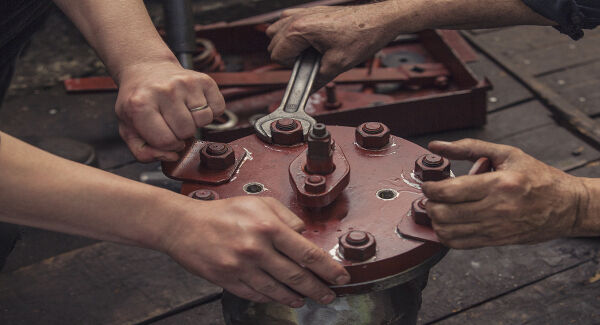
The first soviet
The first soviet was the occupation of a tailors’ workshop in Dublin in November 1918. The Voice of Labour, edited by self-styled ‘Irish Bolshevik’ Cathal O’Shannon, called it ‘The Tailors’ Soviet’.
But the best known and most political action was the ‘Knocklong Soviet’, in reality the seizure of thirteen Limerick creameries owned by Cleeve’s in May 1920. Led by three ITGWU officials and a council of action, it was clearly trying to set an example to the broader movement. A red flag was hoisted over the central factory and a banner displayed the famous slogan: ‘We make butter, not profits. Knocklong creamery soviet’.
In October the ITGWU’s Watchword of Labour carried features on the earlier occupations of Mazzoni’s and FIAT in Italy, which, it conceded, were ‘an advance on Knocklong’. The last of the workplace occupations during the boom years involved a very symbolic command of Cork harbour. At its conclusion, the Red Flag was sung and the red flag dipped three times in salute before being lowered solemnly and replaced with the tricolour. Arguably, the Cork harbour soviet was supernumerary to the wage dispute, and motivated entirely by politics. It illustrated the evolution of the soviets from functional to demonstrative.
The second type of soviet involved territorial administration. Other than the Belfast Soviet, so-called for the way in which the General Strike Committee took over the city for two weeks during the engineering strike in 1919, all were declared in support of the independence campaign. The supreme example was Limerick in April 1919, when the Trades and Labour Council set up a citizens’ police force, organized food and fuel supplies, fixed prices, and printed its own money.
But there were also soviets during the political prisoners strike in 1920. The strike began on 12 April when Labour called an immediate, indefinite general stoppage for the release of political prisoners on hunger strike in Mountjoy. In Waterford the trades council took over the City Hall, hoisted a red flag over the building, and appointed three ‘soviet commissioners’ to run the city.
It was pure theatre, but also indicative of a consciousness which the Labour leadership failed to exploit. Alarmed about the national revolution turning Bolshevist, Dublin Castle released the prisoners after three days. How many other soviets were declared during the strike has yet to be calculated. For the most part they’ve been dismissed as an adjunct to the national struggle. Some have argued that they were really the negation of class consciousness as they subordinated the red to the green.
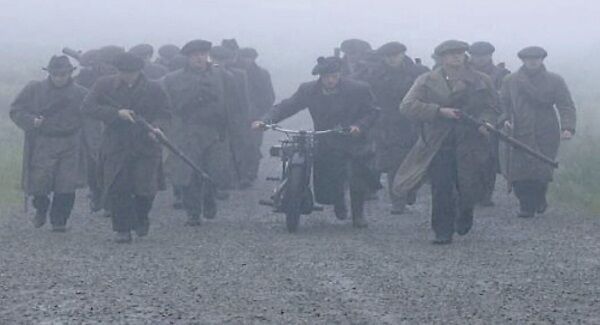
Labour and the independence struggle
The complex relationship between Labour and Sinn Féin is exemplified in the Democratic Programme. The Democratic Programme is often explained as a thank-you to Labour for standing down from the 1918 election.
The Wind That Shakes the Barley (2006) featured a scene where republicans debate the Treaty. Dan, a union man and socialist, takes a piece of paper out of his pocket and quotes from the Programme and says: ‘that’s what we all signed up to when we voted for the Dáil’. That couldn’t have happened. The general election was in December and the Democratic Programme was thought of in January.
The Programme had nothing to do with the 1918 election and no one voted for it. It was neither democratic nor a programme. It had everything to do with the International Socialist Conference in Berne, Switzerland in February 1919. The Labour Party was keen to be part of the International, and a key part of Sinn Féin strategy was to canvass support for the Republic at the Paris Peace talks, and Sinn Féin expected that the left would have an influence on the talks.
There was a payback for labour in the chapter XIII of the Treaty of Versailles, which set up the International Labour Organization.
Seán T. Ó Ceallaigh offered to have a social programme endorsed by the Dáil so that this could act as a mandate for the Labour representatives at Berne, Switzerland. The Democratic Programme was adopted by Dáil Éireann on its inaugural meeting on 21 January. In Berne, Labour persuaded the British Labour Party to replace home rule with self-determination as its policy on Ireland.
Historians like to criticise Sinn Féin for watering down the original draft and not implementing the Programme. But it was up to Labour to fight its corner and the remarkable thing is that the Labour leaders who drafted the Programme, Tom Johnson and William O’Brien, never consulted the Labour Party executive, and the Programme was written deliberately in a vague style. In other words, it was not written to be implemented. Labour did not want a bargaining relationship with Sinn Féin for fear of being sucked into the national revolution.
But by 1920 Labour was being dragged into the revolution by collusion between workers and republicans at rank and file level, and actions like the Limerick Soviet. This was particularly obvious in the local elections of 1920, and especially in Cork City, where there was marked co-operation between the ITGWU and Sinn Féin. The escalation of British counter-insurgence in 1920 – with over 4,000 raids in February alone – inevitably affected Labour. More than a dozen ITGWU officials were arrested.
In Cork, the ITGWU hall was burned and Tadhg Barry, an outstanding organizer of rural workers, was imprisoned and later shot. At leadership level, Labour tried to keep its distance. It never recognised Dáil Éireann until after the ratification of the Anglo-Irish treaty in January 1922, lest it jeopardize relations with the Irish Department of the British Ministry of Labour. Another consideration was that the bigger unions had funds tied up in insurance sections, set up under the National Insurance Act (1911).
Sinn Féin was affected by the world-wide radicalism in 1919. Even future conservatives like Ernest Blythe were advocating the creation of an economy based on co-operatives, and advised caution when setting up these co-operatives ‘so as not to endanger the unity of the people and to retain the support of the Labour Movement’.
The Democratic Programme was just one of a number of overtures from Sinn Féin to Labour. Dáil Eireann’s Department of Labour was virtually the dept of the Labour Party. Its job was to keep Labour onside. The Minister of Labour (1919-22) was Constance Markievicz, former Citizen Army officer and an admirer of James Connolly.
But by 1920, the radical climate was ebbing away. In May, farmers discussed the formation of a Farmers’ Freedom Force to oppose ‘Russian methods’. Coincidentally, May 1920 saw the emergence of reaction throughout Europe. Weeks later, the Dáil Department of Home Affairs intervened to stop the ranch war in the west, where small holders were trying to break up big farms.
Headed by Kerry TD Austin Stack, it published a pamphlet The Constructive Work of Dáil Eireann, and boasted of its ability to prevent the country from sliding into class warfare. In fairness to Stack, British intelligence began a propaganda campaign in 1920 to depict the Irish revolution as Bolshevist and Sinn Féin as puppets of the Communist International. In that context it’s significant that there was no interference in labour unrest from the IRA.
Labour leaders believed that as long as the unions were getting stronger, there was nothing to worry about. Union strength could be turned into political currency at any time, and Labour would come into its own once the national question was settled.
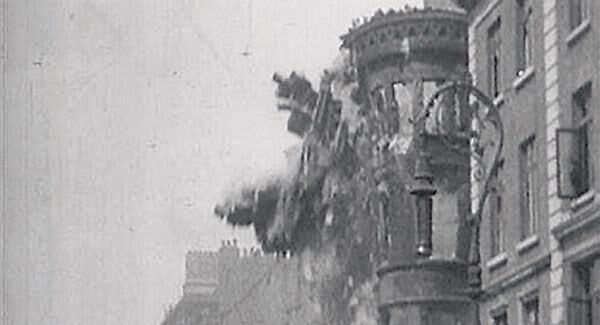
The slump
Did the War of Independence unintentionally help the wages movement? The answer must be yes for the way it paralyzed the RIC, and the corollary of that is that where the War was most intense Labour was more likely to be militant. This became very evident in 1921.
The boom and the massive expansion of the world’s productive capacity created a crisis of overproduction in 1920. Food prices started to fall in August. Industry was affected in 1921, and by 1922 over 25% of insured workers were unemployed.
Employers demanded a return to pre-war wage levels and in Britain and Northern Ireland there was a sudden adjustment following Black Friday, 15 April 1921. That was the day the National Transport Workers’ Federation and the National Union of Railway (NUR) refused to support the Miners’ Federation of Great Britain in their opposition to pay cuts.
The collapse of the so-called ‘triple alliance’ led to a series of wage cuts. Employers expected that the same would happen in Ireland with the railwaymen providing the initial sacrificial victims. But the unsettled conditions generated by the Truce, the split in the IRA, and the Civil War delayed employer action.
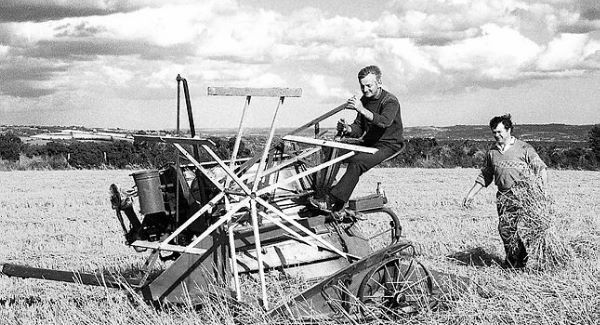
How was labour to respond? At the Irish TUC annual congress in Aug 1921, there was much talk of ‘holding the harvest’ and resisting all wage cuts. The ITUC executive offered to discuss resistance with the NUR. Instead the NUR executive opted to put its case to arbitration under a Tribunal headed by Sir William Carrigan.
After that, it was every union for itself. What amounted to an industrial war rumbled on in fits and starts over two years, constantly interrupted by the unsettled state of the country. The final phase began in July 1923 when some 3,000 dockers refused to accept a pay-cut and were locked out. This was signal for wider employers’ action, but significantly the government urged employers to stay their hand until after the general election. President W.T. Cosgrave took seriously a threat by Jim Larkin, just back from the United States, to link up with republicans and disrupt the elections.
By contrast, the Labour Party, now the official opposition in Dáil Eireann, refused to do anything that might jeopardize the constitution. Tom Johnson would not even walk out of Dáil Éireann in protest at the partisan deployment of the army in strikes. Labour had done well in the first Free State elections, fielding 18 candidates and returning 17. It now thought it would do better, but its irrelevance to industrial conflict sealed its fate and it dropped to 14 seats.
By August 1923 about 20,000 trade unionists were locked out or on strike. In Cork, the Employers’ Federation fought a dispute with 6,000 workers in building, manufacture, distribution, and transport between 21 August and 9 November.
As in the boom years, Munster was prominent in direct action, notably in 1922. The first of approximately 80 occupations in 1922 occurred at Quartertown in Mallow, where strikers seized the flour mills for two weeks until evicted by pro-Treaty IRA. It was typical of the times that the workers accused the ITGWU of collusion with the IRA. The biggest single action of 1922 involved the Cleeve company.
In March the company demanded a one-third reduction in wage rates, prompting the revival of the Council of Action and the seizure of thirty-nine creameries in Clare, Limerick, and Tipperary in May, together with mills and other workshops owned by the combine. It seemed initially that the soviets might realise their motto ‘the sovereign people’, obviously taken from the writings of Pearse.
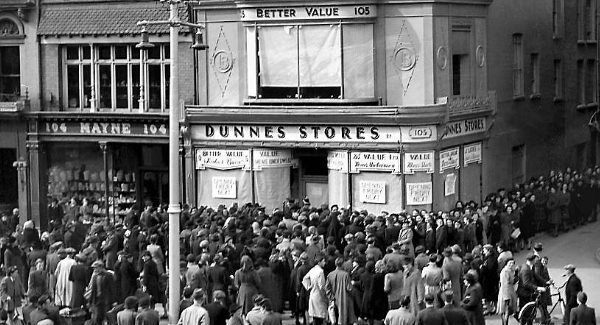
They had the backing of clerical staffs and a majority of managers. The ITGWU offered covert assistance with the storage and export of butter. But farmer too had grown increasingly militant, and refused to supply milk to the soviet creameries, affirmed their opposition to ‘Russian methods’, and replied with a propaganda war against ‘Bolshevism’. The end came in July and August as the Free State army rolled up the ‘Munster Republic’ along the Waterford-Limerick line.
The restoration of effective policing in 1923 reduced the number of soviets, and one of the last was the seizure of Waterford city’s gasworks in January. It was run successfully by the workers until they were evicted by the Free State army in March.
By 1923 the government was redirecting its policy of treating republicanism as nothing more than mindless anarchy against what it was calling ‘labour irregularism’. It also recruited an army unit known as the Special Infantry Corps to act as ‘armed police’ in farm strikes. The idea was that the Special Infantry would save the army and the Garda Síochána from attracting the odium that went with that sort of work.
The end of an era came on 15 December in County Waterford, where 1,500 farm labourers had been on strike against a wage cut since May. The dispute had developed into a miniature civil war. Labourers burnt hay ricks and sabotaged creameries. Farmers formed a self-styled White Guard and assaulted the parish secretaries of the union. The government sent in the Special Infantry Corps, and admitted their job was to protect the farmers. After the harvest in August, it was clear the strike was hopeless. William O’Brien decided it could bankrupt the union and would have to called off, even though there was no chance of more than 40% of the men getting their jobs back. As he noted in his memoirs: ‘that ended that and we did not try to organize the agricultural labourers afterwards’. So that ended that. By 1924 the Labour movement was battered, divided, and demoralized. Trade unionism had collapsed on the land and severely contracted among unskilled urban workers.
The ITGWU had 120,000 members in 1921 and 15,000 by 1929.
How different was Munster?
How different was Munster? Not surprisingly, Ulster emerges as the most distinctive province during these years as the Labour movement in the North diverged.
Militancy peaked in the North in 1918-19, when the southern labour movement was still in the ascendant. Syndicalism was less influential. And the British based unions consolidated in the North, while the south became dominated by Irish unions for the first time. Connacht stands out for the relative weakness of trade unionism in the west, especially on the land.
Munster and Leinster had broadly similar experiences, of rapid growth of the ITGWU, of strike tactics, and of labour being drawn into the independence struggle, except that Munster was more noted for direct action, sabotage, general strikes, and soviets. It’s unlikely that Munster’s history of union organization in small towns and on the land in the 19th century explains this.
Behaviour in industrial relations is usually determined by the present rather than the past. Trade unionism is an idea, not a tradition. The obvious difference is that the War of Independence was more intense in Munster, and that this both encouraged direct action and made it easier to take direct action. This was very evident in 1922.
Finally, many of the chronic problems that beset the labour movement throughout the 20th century can be traced to these years. It would be unfair to accuse the leadership of betraying the rank and file. It was impossible to ‘hold the harvest’ in the context of the slump. Economic reality was against them. It was reckless to have promised so much, but they would have been criticised for compromise too.
However, the Labour leadership of the time was poor. It can be faulted for not engaging with the national revolution and seeing it as an opportunity rather than a problem; and for failing to tackle the thorny question of the relationship between the political and industrial wings of the movement.
Labour’s silliest mistake was not to see that the good times would one day come to halt and a boom is always followed by a slump. How could they have been so stupid? We wouldn’t make that mistake today, would we?

****
